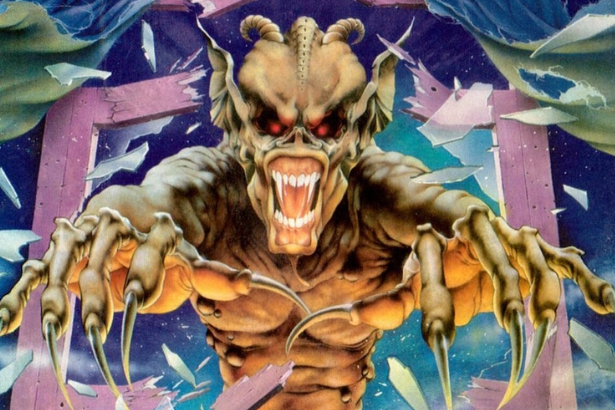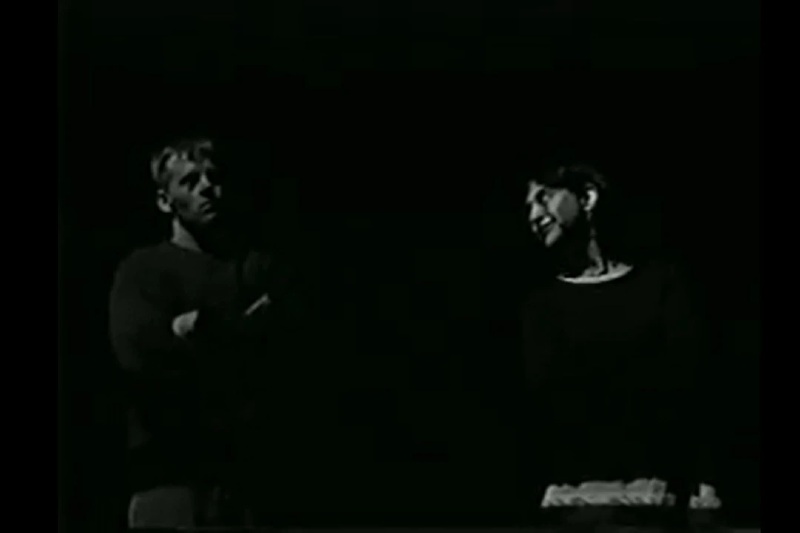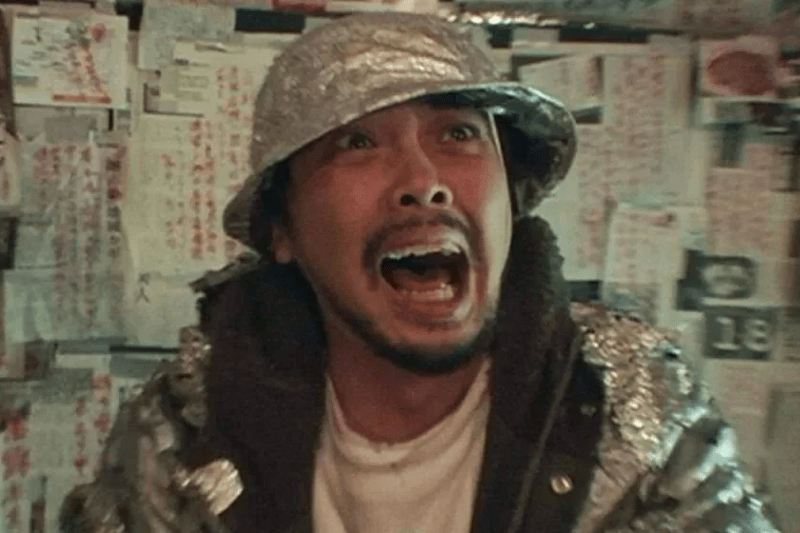There are few horror villains as instantly iconic as Pinhead, the lead Cenobite and mercilessly cold master of ultra-violent gratification from the Hellraiser franchise. From the moment he first appeared in 1987's Hellraiser, directed by Clive Barker and based on his short story "The Hellbound Heart," he captured something indelible in the horror imagination. How could audiences not be enthralled by his unique fetish-wear inspired style and face adorned with pins in a manner akin to ritualistic mutilation?
As a clergyman in The Order of the Gash, Pinhead's moral ambiguity ("angels to some, demons to others") would eventually give way to a more staid slasher-esque malice, but the magnetism of that initial appeal was retained through Doug Bradley's committed performance. The newest Hellraiser reboot will bring Pinhead back from hell, this time portrayed by Jamie Clayton. It's an exciting prospect, although I can't help but wish for the return of the true villain of the first two films, the woman who was supposed to be front-and-center in Hellraiser until Pinhead stole the show.
The Cenobites aren’t in Hellraiser all that much. For the majority of the running time, the most enthralling antagonist of the film is Julia Cotton, played by award-winning stage actress Clare Higgins. A bored housewife who has moved with her bland husband Larry (Andrew Robinson) to his childhood home, she yearns for her former lover, her brother-in-law Frank (Sean Chapman) who went missing years ago. A sadomasochist who had grown bored with regular old kink, Frank bought a puzzle box that promised to open up a new world of unprecedented thrills. Out came the Cenobites, whose non-existent borders between pleasure and pain left Frank a bloody pile of viscera in Larry’s attic. It takes very little effort for Frank to convince Julia to help him become whole again, a process that requires multiple murders.
Befitting a Clive Barker adaptation, Hellraiser revels in depicting the ways that one can be consumed by obsessive craving. Frank’s descent into hell seems almost mundane compared to Julia’s narrative, one that is as intrigued by female agency as it is by deviant desire. It’s easy to sympathise with her at first as a dissatisfied housewife with a clueless other half whose only joy in life comes from reminiscing about an affair with a man who, at best, seems like a controlling creep. She chooses the carnal over the content, picking the dangers of Frank and all that his resurrection entails. She invites a series of gormless men to her home to pick them off one by one with a hammer, a task that becomes increasingly easy with each victim. She soon evolves from a timid figure to a power-dressing capital B Bitch, a thoroughly ‘80s woman with padded shoulders and murderous Annie Lennox styling. Her slide into villain is so seamless that it makes Frank’s derangement look like amateur hour by comparison. You wonder why she even needs Frank in the first place.
Well, she doesn’t. Frank glibly kills her off in Hellraiser’s climax in a moment of almost fleeting violence that reveals how he viewed her as an end to his vile means. But, as horror films have taught us, you can’t keep a good villainess down, and Julia made a swift and bloody return in Hellbound: Hellraiser 2. This time around, Larry’s daughter Kirsty (Ashley Laurence) is stuck in an asylum with a doctor who wants to raise Julia from the dead so that he can satisfy his own obsession with the puzzle box. Julia returns (now with longer hair and a fabulous full-length gown) and any previous qualms she may have possessed have turned to dust after her experiences in the other realm.
The Hellraiser franchise has never been as sexually voracious as its reputation (or that of Barker) suggests. The violence has always taken first place over anything more sensual, and we see this in Julia. She goes after what she wants and uses her beauty to do so but she isn’t as ravenous as you’d first think. She doesn’t sleep with any of the men she brings home to kill. Indeed, she seems put off by the entire prospect of sex unless it’s with Frank (and we never see her get it on with his skinless corpse – thanks a lot, 1980s movie standards — but there is a scene where she sucks on Frank’s epidermal-free fingers). By Hellbound, she doesn’t seem interested in sex at all. Her pleasure comes from luring in the men who see women like her as useful props. Here, she goes full fairy-tale villain, sucking men dry with a deadly kiss, taking a jab at Kirsty by calling her step-daughter Snow White, and ripping Frank’s heart straight from his chest. She goes from being eagerly dominated by Frank to all but crushing him under her heel.
The Cenobites are undoubtedly alluring, the end result of humans who made the darkest deal with forces they could not hope to comprehend. In Hellbound, we see how Pinhead came to be and the glimpse into his past grounds his ambiguous duties in something painfully familiar. Yet the first two films keenly center those who are still human, like Julia. Later movies would essentially turn the Cenobites into kill-heavy figures like Freddy Krueger and Jason Voorhees, that crucial foundation of mundanity stripped from the equation. Julia’s presence is potent because her trail to inescapable deviance is incredibly easy to understand.
It takes so little for one of us to succumb to the taboo. For Pinhead, the horrors of war he experienced as a soldier drove him to ruin well before he opened the puzzle box. Julia’s biggest crime before her murder spree was adultery, fuelled by a desperate urge to be more than yet another dissatisfied woman. Why be the wicked stepmother when you can be the evil queen? By the second film, she’s experienced the worst of what both worlds have to offer and she has no plans to be a sacrificial lamb. Who could blame her? As a villain, her satisfaction comes less from the almost pitiful act of murder than the glint in her eyes as she shows eager men the hell they face.
Clive Barker had plans to make Julia the recurring villain of the series but Clare Higgins knew that fans preferred Pinhead and company to her so she bowed out and returned to television and stage work in the UK. It’s a shame because the franchise never truly recovered after she was dragged into the vortex without her skin. An increasing number of boring protagonists opening the box for presumed pleasures without the hook of human allure quickly became dull. Still, Julia got the last laugh as one of the great evil queens of horror cinema. Those who take the time to revisit the realm of Hellraiser may quickly find themselves following her lead.







